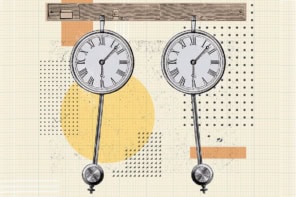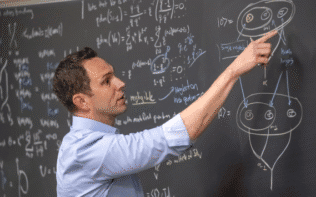
Patterns describing how far and how frequently people travel to different locations within cities are surprisingly universal across the world, according to a new study by an international team of researchers. While it may seem obvious that people will travel to closer locations more often, this aspect of human mobility had not been analysed in detail before and the results could help city planners achieve a wide range of goals from improving public transport to controlling disease.
How people move from one place to another is of fundamental importance. It dictates social, economic and cultural exchanges; how cities develop and grow; traffic congestion and pollution; and the spread of contagious diseases. But despite this, our understanding of human movements is incomplete. Existing models tend to focus on the number of people that travel between different locations, with little consideration of the frequencies of recurring visits by individuals.
Gravity and radiation
The gravity law of human migration says that the movement between two urban areas decrease with distance and increases with population size or importance of the areas. The radiation model adds the component of other places people could stop on their journeys: the less places there are to stop – to go shopping or to work, for example – the further people will travel.
In this latest research, researchers analysed anonymized mobility data from millions of mobile phone users in seven cities around the world: Abidjan, Ivory Coast; Dakar, Senegal; Boston, US; Singapore; and Braga, Lisbon and Porto in Portugal. The data were collected during different periods between 2006 and 2013. Using these data, the researchers were able to estimate were each phone user lived and the places they travelled.
“Analysing not only visitation distance, but also frequency, allows us to gain a deeper understanding of urban mobility patterns, and to develop more accurate models of how people interact with the physical space surrounding them,” team member Paolo Santi of the Senseable City Laboratory at the Massachusetts Institute of Technology says. “These models could be used, for instance, to estimate energy demand in the transition towards more pervasive electric mobility.”
Predictable and universal
Santi and colleagues found that flows to all locations in a city follow a predictable and universal pattern, revealing a simple and robust law that they call the universal visitation law of human mobility. According to this law, the number of visitors to any location decreases as the inverse square of the product of their visiting frequency and travel distance. Or put more simply, people are unlikely to travel far too often.

The one scale that rules them all
This scaling law is remarkably consistent across urban areas around the world, according to the researchers, who found that the number of individuals who visited different locations was highly consistent across the different cities. They also found that the number of visitors decreases in a predictable pattern for all locations in a given city, with respect to the frequency of visits and distance travelled. High-density areas were filled with people who had travelled shorter distances.
“We believe that the striking similarity observed across different cities might be caused by some common, fundamental mechanism that drives people’s mobility choices,” Santi told Physics World. He explains that one possibility is that people alternate between returning to already visited locations and exploring new locations. But exploration choices are based on popularity: people are more likely to explore popular locations. “We have shown that this basic mechanism can generate a pattern of visitation distance and frequencies that replicates the visitation law observed in the data,” Santi adds.
Missing component
The research is described in a paper in Nature, and in an accompanying commentary, Laura Alessandretti and Sune Lehmann, at the Technical University of Denmark, write that Santi and colleagues “have identified a key component that was missing from existing theoretical frameworks of human mobility: visitor frequency”. They add that the discovery of the law paves “the way for studies that could deepen our theoretical understanding of how individual and collective mobility patterns are connected”.
Santi says, “We would like to explore more the applications of the visitation law, for example in the field of urban infrastructure design and planning”. “Also, we are applying the visitation law to study epidemics, trying to understand the effect of restrictions on distance and frequency of visitation to the size of the infected population.”



